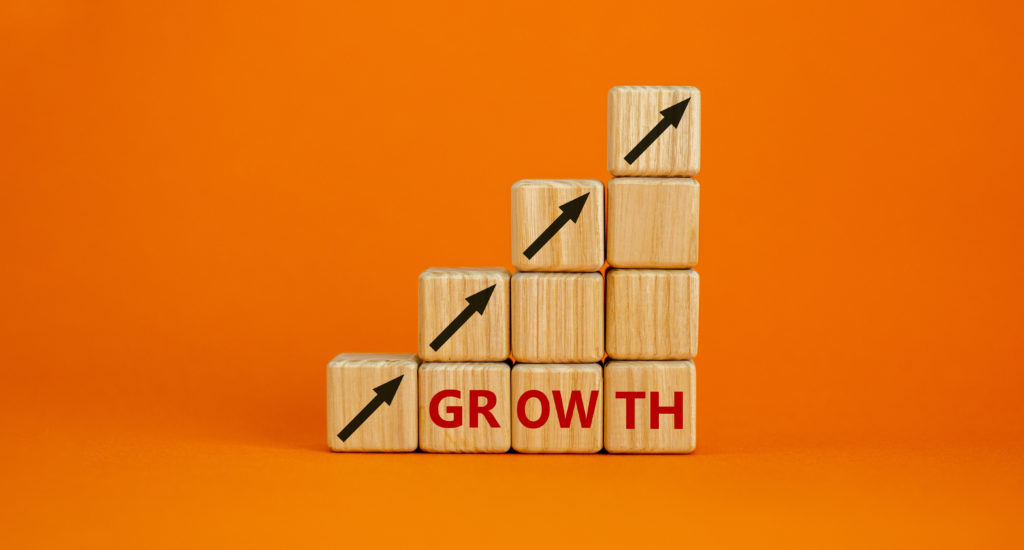
When most leaders think about growing their businesses, revenue and profits are typically top of mind. In a traditional “performance” culture, company and individual success is measured by accomplishments and financial impact. But research shows that this performance-based culture may not be the most sustainable way to drive results. In fact, it can have a negative impact on employees’ well-being and performance, according to Tony Schwartz of the Harvard Business Review. Today, savvy leaders understand that organizational growth is a direct reflection of the company’s culture. When companies cultivate a “growth” culture, they empower employees to achieve personal growth with the knowledge that organizational results will follow.
Defining Growth Culture
A growth culture is one that values personal and shared learning and promotes experimentation and innovation. It is supported by consistent communication and feedback throughout the organization. “A true growth culture also focuses on deeper issues connected to how people feel, and how they behave as a result,” Schwartz says. “In a growth culture, people build their capacity to see through blind spots, acknowledge insecurities and shortcomings rather than unconsciously acting them out, and spend less energy defending their personal value so they have more energy available to create external value.” In a growth culture, how people feel and how they make other people feel is just as important as their skills, aptitude and acumen.
According to a report by Gallup, a powerful company culture is a competitive advantage that inspires employees to deliver on an organization’s unique mission, purpose and values. Yet only two in 10 U.S. employees feel connected to their company culture. Those organizations that make fostering a people-centric growth culture a priority set themselves apart from the competition and foster growth throughout the company.
Three Pillars of a Growth Culture
A company’s culture can enhance the productivity, collaboration, loyalty and contentment of its team members. But it takes a committed effort. Use these tenants to develop an environment and mindset that prioritizes growth.
- Encourage continuous learning and development. Fostering a growth culture starts with encouraging the personal and professional development of employees. Create opportunities for workers to enhance their skills and knowledge by participating in training programs or by taking on new challenges. By emphasizing education, companies cultivate a culture of personal and professional growth. In addition, celebrating individual and team achievements can boost motivation and commitment to the pursuit of excellence. Creating a culture of growth requires leaders to prioritize learning and development as the foundation of their organization’s success.
- Empower intrinsic motivation. Intrinsic motivation is the term used to describe the incentive a person feels to complete a task because they find it interesting or enjoyable. Extrinsic motivation is what a person feels when completing a task for an external reward. These types of motivations have different impacts on buyers and employees alike. Research from Dale Carnegie Training suggests that “making people feel valued, confident, empowered, and connected translates to higher engagement.” In this environment, the first step is protecting people’s intrinsic motivation. Keep them engaged. The same survey reports that only 25 percent of respondents strongly agree that they feel empowered to make decisions at work and only 27 percent strongly agree that their managers make them feel valued and appreciated. By prioritizing an employee’s intrinsic motivation, they’ll be more engaged and more likely to develop creative and innovative solutions. Further, highly engaged employees are more likely to collaborate with others, improving communication and cross-functional connections throughout the company.
- Embrace failure as a learning opportunity. Businesses committed to a growth culture understand that success is an iterative process. Every opportunity has its roadblocks and missteps before results are achieved. Founder and president of Inovautus Consulting Sarah Johnson Dobek says fear of failure hinders growth. “Many firms will try something once, not see the expected results, and assume the tactic did not work and will not try it again. This is a mistake,” Dobek says. “Successful marketing requires testing and iteration. Leaders of high-growth firms understand this and approach marketing from a test and tweak perspective.” This approach to marketing can be applied to the organization overall. A commitment to ongoing improvement shouldn’t stop when a project goes well. Rather, adopt an ongoing reflective process where teams always seek to understand, improve and grow from every situation.
Meet Change with Change

Because business is always changing, a successful growth plan starts with an organizational mindset and culture. A growth culture focuses on supporting and honoring people and helping them to evolve as individuals, build relationships and develop their skills. Leaders who recognize the importance of a growth culture understand that the human element is foundational to an organization’s success. By encouraging employee development, prioritizing intrinsic motivation and embracing failure, businesses can connect the dots between employee development and organizational goals. When company culture supports employee growth, engagement and well-being, individuals and the organization will flourish.

